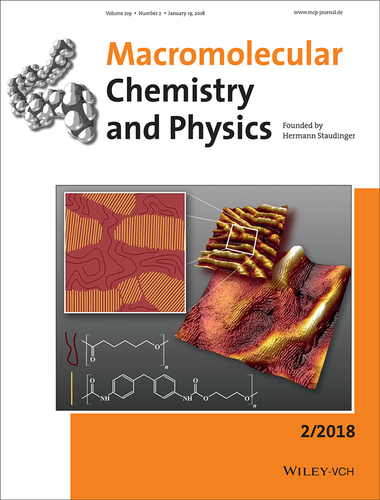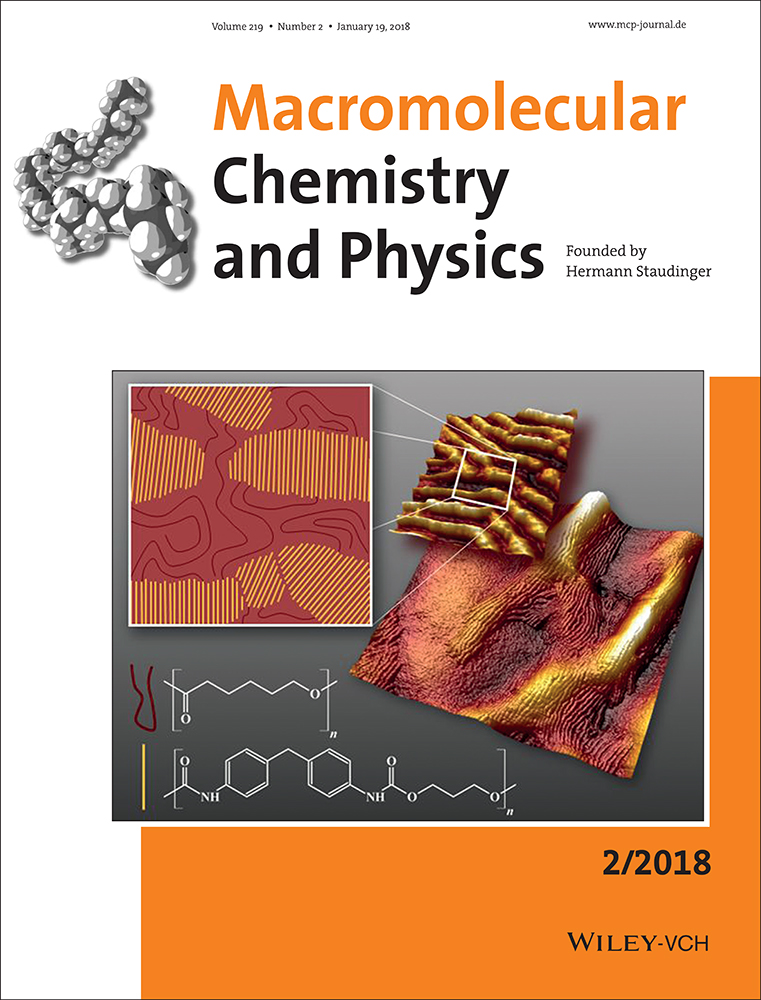Macromol. Chem. Phys. 2/2018
Graphical Abstract
Front Cover: Atomic force microscopy topography (1 × 1 μm) and modulus map (125 × 125 nm) images reveal the rod-like morphology of hard domains in polycaprolactone-based segmented polyurethanes. The corresponding structural model shows these domains as parallel stacks of hard segments embedded in a soft polycaprolactone matrix. Further details can be found in article number 1700214 by Richard Chartoff* and co-workers.





